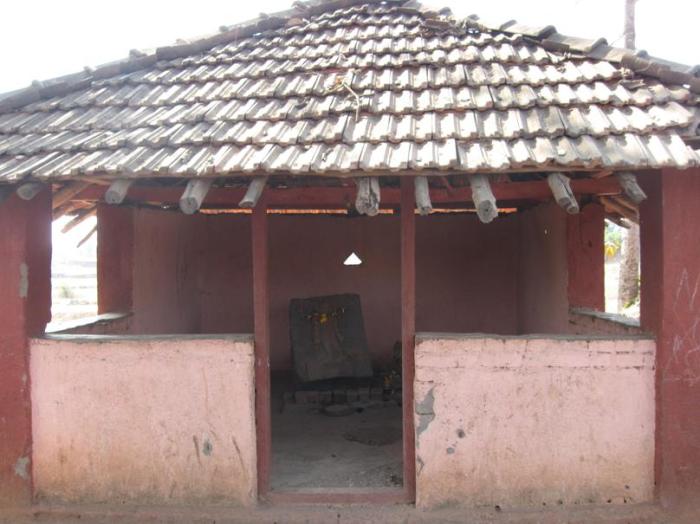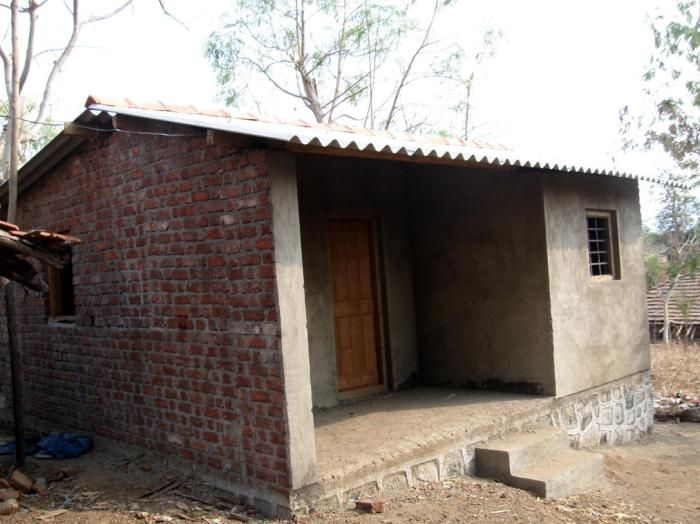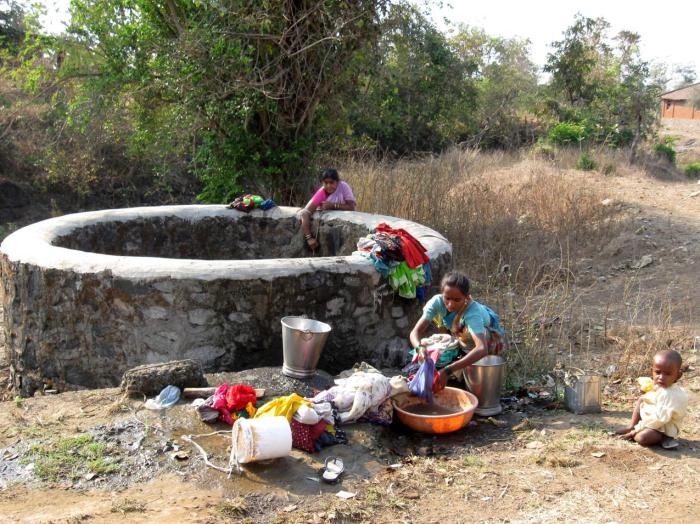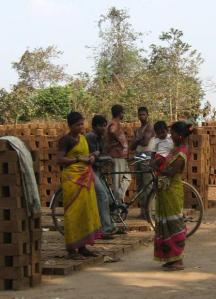Have you heard of a place called Nevrepada?
Chances are that you haven’t. Even I hadn’t heard of this place till I visited it about a month back. A visit that I think about even today, a visit that opened my eyes to realities I had only read about in newspapers or seen on TV. It is a visit I invite you to join me in as I write this post.
Nevrepada is a hamlet near Aghai Village in Shahapur Taluka, Thane District, about a 100-odd kilometres from Mumbai. We drive down the Mumbai-Nashik Road and when we cross the dusty town of Shahapur, there is an underpass which takes us to Atgaon Station on the Mumbai-Kasara line. As we drive by Atgaon station, we see—with part horror and part bemusement—Tata Sumos, Traxs’ and an assortment of four wheelers stuffed with people outside the station. In addition to the people sitting inside the vehicles, some are seated on the luggage rack above these vehicles, while some are perched on the side ledge, calmly hanging on to the windows for dear life. That’s when we realise that these vehicles are probably the only mode of transport in the area.

Driving on, we soon pass a board announcing that we are on the forest department’s land. The dried up brown earth sprouting dried up brown trees and shrubs is a forest? Is an occasional green tree enough for the area to be called a forest? If such a term as an arid forest exists, then this is the perfect illustration of that term.
We look around bleakly at the various shades of brown, hoping for some change in the landscape. This comes in the form of an ugly square building with an entrance board announcing it to be a retreat for some religious organisation. We pass more such plots earmarked for other religious organisations. Construction on forest land, we ask aloud? Would we soon be seeing other commercial establishments coming up here as well?

Soon we sight a large water body in the distance—the Modaksagar lake, which is one of the four lakes supplying water to Mumbai city. And then, we come across the water-bearing pipe itself running along the road, and are awed by its size. Wherever there are leaks and spills, we see people gathered there to fill water. This a little puzzling—surely, those living so close to a drinking water source would have a direct water supply to their homes, wouldn’t they?
Aghai village is up ahead and we get off here to have some lunch at one of the villager’s homes. It is a simple, but delicious, lunch of rice, drumstick curry, dal, radish salad and pickle. Over lunch, we get to know a little more about the village and the area—not many vegetables grow here apart from drumstick, the village has a school and a primary health centre, there is no public transport and the villagers are completely dependent on private transport, the village is electrified, piped water supply is erratic and only for one hour every day…
What? Come again? Erratic water supply in a place near a major drinking water source? When we naively ask the woman who served us lunch the reason for the erratic water supply, she says sarcastically, “I don’t suppose it is because all you people in Mumbai need it more than we do, is it?”
On our way after lunch to Nevrepada, which is a kilometre or so from Aghai, we come across a brick-kiln site. Bricks have been laid out to dry, probably for firing later, while a pile of bricks is smoking away lazily. One can hear bird call and insect buzz in the post-prandial silence, and in the distance one can see the step like feature of the Deccan traps. The setting is so idyllic that it takes a little while for us to ask an important question—what is a brick kiln doing in a forest?


The brick-kiln workers and their families live on the site itself in temporary dwellings made of highly combustible reed/grass. Living on the site means that the workers and their families, which include young children, inhale dust and smoke all the time. And when we see the brick and cement construction of a temple on the brick-kiln site, there is a surge of anger at the people who could build a temple, but could not construct better houses for the workers.

We finally reach Nevrepada, and a walk through the hamlet does nothing to lift our spirits. It is a dusty village with clusters of houses making up the hamlet. Most of these houses are pucca constructions, built under some government scheme or the other. The older houses are larger with space for keeping livestock and chickens, store food grains, as well as living space for the family. On the other hand, the design and size of the newest houses built under the latest Gharkul scheme of the government leaves us scratching our heads in confusion. Each of these brick and cement houses comprise a tiny room, a kitchen, and a toilet. There is no loft space and the roof is made of asbestos, as against the tiled roof of the older houses. How can a family and their livestock live in a house of this size?

While Aghai at least had piped water supply, however erratic, Nevrepada does not appear to have even this. We see some rusty hand pumps scattered about in the hamlet some of which pump water, while some don’t. We also come across two wells—one of them appeared to be not in use, while at the second well we come across women washing clothes. We wonder what will happen when the wells dry up in summer. Where will the women go? And where does the drinking water come from if the pumps are not working? And why do people here have water problems when they are so close to a water source? What is the point of constructing toilets without water supply? How do the people who live here manage without water and other obviously lacking amenities?


To try and get answers to all the questions in our minds, we attempt to understand the background of the people who live here—the Katkaris, who are the majority community in this area.
All the workers on the brick-kiln site are from the Katkari tribe, one of the most marginalised and primitive forest ethnic groups/tribes in India. Found largely in the Raigad and Thane districts of Maharashtra, they are considered to be an ex-criminal tribe or a vimukta jati, due to which they face discrimination and harassment from the police and society alike.
According to Rainforest Information Centre, the Katkaris live in extreme poverty conditions and are on the verge of extinction. Looking at the visibly undernourished and malnourished children at the brick-kiln site, this report could very well be true.
We suddenly realise then that the media reports of malnutrition deaths, bonded labour, and exploitative working conditions faced by tribals in places near Mumbai are from places like this. Such stories are examples of under-reporting by the media, instead of its usual sensationalist and breaking news type of stories.
A visit to Nevrepada is a lesson in seeing first hand discrimination, marginalisation, despair and desolation. It is a glimpse into the life of people who have been denied access to resources and who have been largely ignored by governmental and non-governmental programmes. Indeed, we do not see the presence of any NGO at either Aghai or Nevrepada. What we do see is the ubiquitous by-product of development at Nevrepada—plastic waste.

Our return journey to Mumbai is a contemplative one. Nevrepada’s state of deprivation is like that of a village from one of India’s most backward regions; the lack of piped water makes the area appear to be in a permanent state of drought; and the region where it is located appears like an arid zone rather than the forest area it is in.
But none of this is true. Nevrepada is just a 100 km from Mumbai—the country’s financial capital, the country’s business capital, the country’s entertainment capital, etc. Nevrepada is located almost next door to a perennial fresh water source. Nevrepada is located in a forest. And yet, Nevrepada is no picnic spot. It is one of the media stories on the hidden and neglected side of India come to life in front of us.
We have seen just one Nevrepada. Wonder how many more there are.

tragic…. whither ‘development’?!
wonderful reportage!
LikeLike
Yes, it is very tragic indeed.
LikeLike
your report has left me devastated. Was this visit part of your work?
LikeLike
It was devastating for me too. Yes, it was part of my work to attempt to document a project that we have been carrying out in the area.
LikeLike
That is so sad… I have never seen such a place before in my life. Only in movies have I seen stories about such a place.
LikeLike
It is actually quite devastating to see this and what is worse is the way these people seem to have accepted this life as their fate.
LikeLike
I am sure there are many such ‘nevrepadas’, though few of us actually know of them. and to think that its so near mumbai!
LikeLike
I’m sure there are many more Nevrepadas than there are examples of India Shining.
LikeLike
Nice article. I’m actually writing an article similar in nature, based on my visit to rural Bihar recently.
Liked the way you wrote. Didn’t quite like the facts and situation mentioned though 😐
LikeLike
Thanks, Haresh. I look forward to reading about your article.
LikeLike
well there are lot of places like this in India, so m not surprised to see it.. i have seen a few…. visited in Punjab tough….
LikeLike
Bajaj people should make an ad out of this place (They’ve already made ads of several places on their discover 100kmpl concept
LikeLike
Well, I think this is oone ad that they won’t like to make.
LikeLike
I can imagine what an impact the visit must have left on you. Wonderful coverage.
LikeLike
One can’t remain unaffected by what one sees and experiences. Nevrepada made more of an impact because of the way the place is and also due to the fact that it is so close to Mumbai.
LikeLike
Well written. nothing surprising though. why not submit it to one of the major newspapers to create more awareness.
LikeLike
Well, right now this blog is my platform. Maybe, another time. Thanks for the suggestion and thank you also for stopping by and commenting.
LikeLike
I am humbled by those pictures and account of their life. I never think of water as being a luxury. Thank you for sharing such important information – I can’t imagine your heart will ever be the same after a visit like this.
Emily
LikeLike
Living in Mumbai and having 24/7 access to running water makes me take this precious natural resource for granted. But after a visit to Nevrepada, I can never waste even a drop of water ever again.
Thanks for stopping by and commenting, Emily.
LikeLike
This is a typical case of lop-sided development taking place in India. Development of the urban sector, almost necessarily means deprivation and loss of livelihood for the rural poor. Among these, the tribals are always the worst affected. I admire the perseverance and the hope and passion of the those who work to bring about some change in the lives of this community.
LikeLike
I am now convinced that development is always at the cost of someone or something. It is never inclusive and always exclusionary.
LikeLike
The sense of deja vu made me refrain from commenting so far, but silence is of no use if it serves lesser purpose than speech, so i am writing..
The truth is that some of us are oblivious of this reality and some of us are blind to it. Yet another group is in close contact with the marginalized and they have no respite from their work to write, much like the doctor who has to shield him/herself from getting too emotional lest they cannot function optimally. One more group has become complacent.
The account is terse and honest and a perspective that allows the despondency to show. This is the true account of a reality. The sensitivity with which you have written it now deserves a sensitivity to take the issue forward by those who can..
Thank you for this piece of reality…it bites..and very hard..
LikeLike
Thank you for your comments, Deepa. I really appreciate it.
LikeLike
SINCE YOU MENTIONED OF AGHAI, I WOULD LIKE TO ENQUIRE WHETHER AGHAI IS ON FOREST LAND. AND IF IT IS, IS IT VIABLE TO SELL FOREST LAND. I HAVE HEARD THAT PRIVATE FOREST CAN BE SOLD. IF WE WISH TO START UP SOME NATURE BASED INDUSTRY LIKE BAMBOO FARMING, IS IT PERMITTED. THIS WILL HELP TO GENERATE EMPLOYMENT AND ALSO SLOWLY DEVELOP THE INFRASTRUCTURE IN AND AROUNG AGHAI. PLEASE REPLY
LikeLike
Thank you for stopping by and commenting, Ashwin. Agai is very much on forest land. Regarding the other details you have asked, I have no idea. I will try to find out about this and send you a mail.
LikeLike
We are told that there is always a price tag. What don’t know is that the price is often paid by someone else. So, next time you burp in contentment- whether after a good meal or that refreshing glass of water or for whatever reason- remember that someone somewhere has sweated and sacrificed for you. One can go on and on over our lopsided priorities and be none the wiser. What we can definitely do is to allow some humility into our lives. Thank the Almighty for the blessings that we enjoy and not claim creature comforts out of a sense of entitlement! Good post, Sudha, and I am sure that this piece will have a greater impact here thah if it was featured in a newspaper.
LikeLike
I don’t know whether this post will have a greater impact here or in a newspaper, but the fact is Nevrepada disturbs me everyday. Every single day. It has been more than a year since I visited this place and it still haunts me. I will never ever take basic necessities for granted and will always be grateful for them.
LikeLike
Sudha ji, Thank you so much for sharing this post. It was an eye opener for me in today’s Satyamev Jayate to see where the water comes from to Mumbai city while people living just 4-5 kms. wait hopelessly for it. Your post was thoroughly done. Amazing how you are able to go on off-beaten paths and stumble upon such tales.
LikeLike
Thank you, Rachna. I had gone to Aghai and Nevrepada on work to document some a project that we were working on. I must confess that I was more interested in this story than what I had come to document. This visit haunts me even today.
LikeLike